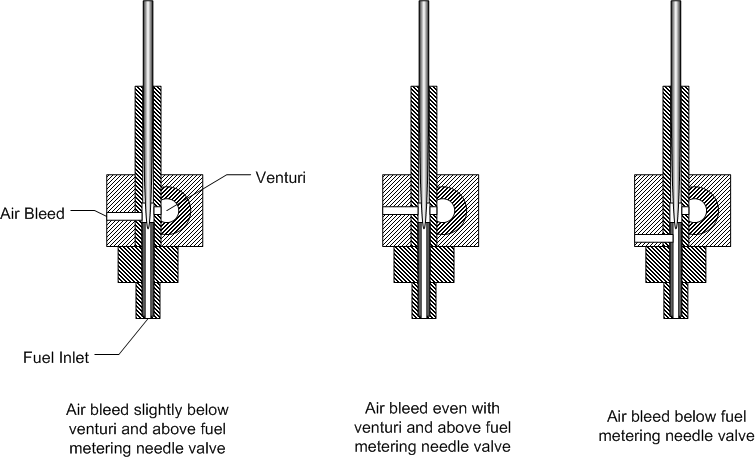- Joined
- Aug 25, 2007
- Messages
- 3,890
- Reaction score
- 715
Below are drawings of my latest carburetor design showing the air bleed in 3 different positions:

I'm assuming there would be little difference between 1 and 2 where, in both cases, the air bleed enters the carburetor above the fuel metering needle valve. However, I'm wondering about the 3rd case where the air bleed enters the fuel stream before the fuel metering needle valve.
Anybody have any thoughts about any of these three positions?
Chuck

I'm assuming there would be little difference between 1 and 2 where, in both cases, the air bleed enters the carburetor above the fuel metering needle valve. However, I'm wondering about the 3rd case where the air bleed enters the fuel stream before the fuel metering needle valve.
Anybody have any thoughts about any of these three positions?
Chuck
































































